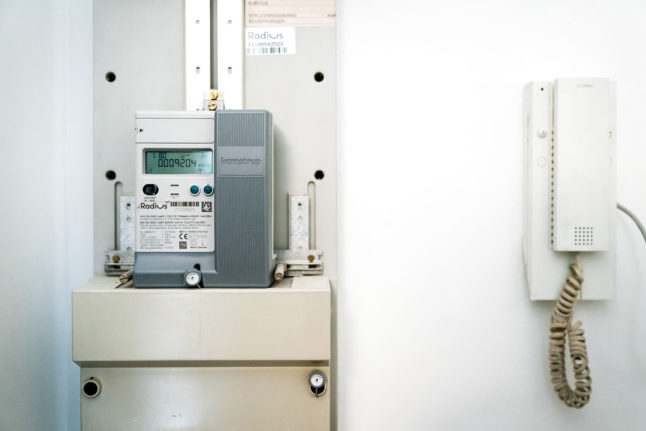A broad majority in the Danish parliament has agreed a new package of cost-saving measures for homes this winter, including sunk electricity taxes and increased family welfare.
Parliament has agreed the new measures to provide additional help to people, particularly families, who are struggling with energy costs.
A core component of the package includes lowering the electricity tax from 69.7 øre per kilowatt-hour to 0.8 øre – equivalent to the minimum rate permitted by the EU – for the first six months of 2023. An øre, literally translating to ‘ear,’ is a kroner-cent.
This measure alone is estimated to cost the Danish state 3.5 billion kroner, while the total cost of the package to the government is around five billion kroner. The deal could be officially adopted by parliament as early as next week.
READ ALSO: Denmark announces new winter aid package for households
The decision is the latest in a number of measures taken by the Danish government in response to record energy prices.
As a result of supply stoppages for Russian gas, on top of inflation, energy prices in Denmark are at record levels, with high costs set to persist throughout the winter.
“Danes are hit hard by inflation. That can already be felt now. We can look ahead to a winter when it will be even more prominent,” Finance Minister Nicolai Wammen said at a press briefing on Friday at which the new package was presented.
“It’s important that we don’t provoke further inflation but we must also help Danes and keep Denmark on the right track. That is what we are doing with this agreement,” he said.
The cut to electricity taxes could save individual households between 1,000 and 2,000 kroner on their bills, according to an expert who spoke to Danish news wire Ritzau.
READ ALSO: How much will Danish energy bills go up this winter?
Despite this, the decision to cut energy tax may not prove to be the best fix for the issue, he said.
“With these initiatives a household will be able to spare between 1,000 and 2,000 kroner on their electricity bill,” Brian Vad Mathiesen, professor in energy planning at Aalborg University, told Ritzau.
“I think it would have been better to send a cheque to all households with a set amount and then keep the electricity tax,” he said.
The government has previously sent one-off payments to selected households in response to the energy crisis. In August, around 400,000 homes in Denmark received 6,000 kroner towards gas bills. To receive the money, the homes had to be primarily gas heated and under a specified total income level, among other criteria.
READ ALSO: Denmark’s state auditor to review potential errors in energy relief payments
But the government has said it wants to limit relief in the form of lump sums because this risks worsening inflation.
Mathiesen said that cutting the electricity tax could have the unwanted effect of removing the incentive for homes to save on electricity use.
More efficient use of energy is the most important tool in the current climate of extremely high energy prices, he said.
“What you risk is that people will take their foot off the brake on energy consumption and that could be harmful in relation to price setting – we could actually experience higher prices than expected,” he said.
The energy planning expert called for more government initiatives that would encourage the Danish public to restrict its energy consumption.
“I also note that there are some long-term initiatives to switch back to district heating [from individual gas heaters, thereby reducing gas consumption for heating, ed.]. I hope that there will be more of these savings initiatives. Both for households and businesses, because that is something that can reduce inflation,” he said.
READ ALSO: EXPLAINED: When should I turn on my heating in Denmark this year?



 Please whitelist us to continue reading.
Please whitelist us to continue reading.
Member comments